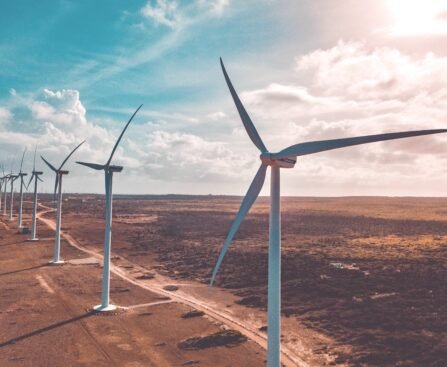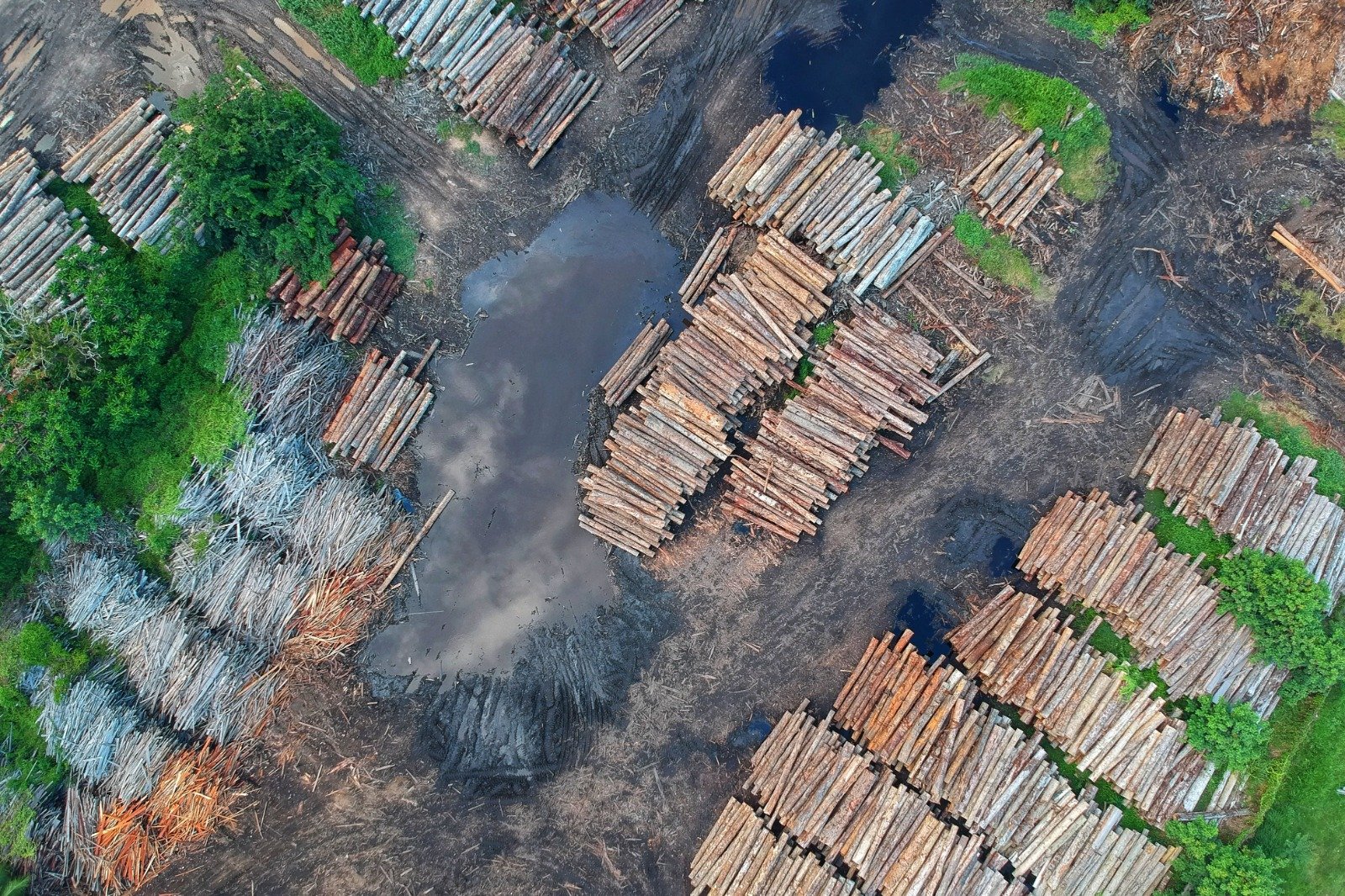Global warming is one of the most pressing issues facing humanity today. Rising global temperatures, largely due to the emission of greenhouse gases, have led to more frequent and severe weather events, melting ice caps, and rising sea levels. One of the most potent ways to combat global warming is through a global transition to renewable energy sources. This blog post aims to shed light on the role of renewable energy in mitigating the effects of global warming. What is Renewable Energy? Renewable energy is generated from natural processes that are continuously replenished, including sunlight, wind, water, and geothermal heat. Unlike fossil fuels, renewable energies produce minimal or no greenhouse gases, contributing less to global warming and climate change (Jacobson & Delucchi, 2011). The main types of renewable energy sources include: Solar Energy: Derived from the sun’s radiation, solar energy can be harnessed using solar panels to generate electricity or for direct heating applications. Wind Energy: Generated by harnessing the kinetic energy of the wind through wind turbines, which convert the energy into electricity. Hydroelectric Energy: Produced by the movement of water, typically in rivers or dams, that turns turbines to generate electricity. Geothermal Energy: Extracted from the Earth’s internal heat, geothermal energy is utilized for electricity generation and direct heating applications. Biomass Energy: Derived from organic materials such as plants, wood, and agricultural or municipal waste, which can be burned or converted into biofuels for energy production. These renewable sources are considered environmentally friendly because they produce minimal or zero emissions of greenhouse gases and pollutants compared to conventional fossil fuels. The use of renewable energy is a key component of efforts to address climate change, reduce dependence on non-renewable resources, and create a more sustainable and resilient energy system. Why is Renewable Energy Important in Mitigating Global Warming? Renewable energy plays a crucial role in mitigating global warming due to its inherent environmental benefits and potential to reduce greenhouse gas emissions. The combustion of fossil fuels for energy production is a primary contributor to the increase in atmospheric concentrations of carbon dioxide (CO2) and other greenhouse gases, leading to the greenhouse effect and global warming. Renewable energy sources, such as solar, wind, hydroelectric, and geothermal, offer cleaner alternatives to traditional fossil fuels. These sources generate electricity without producing the same level of carbon emissions, making them essential components of a low-carbon energy transition. According to the Intergovernmental Panel on Climate Change (IPCC), transitioning to renewable energy sources is a key strategy to limit global temperature rise to well below 2 degrees Celsius above pre-industrial levels, as outlined in the Paris Agreement. The IPCC’s Special Report on Global Warming of 1.5°C emphasizes the urgency of reducing carbon emissions and highlights the significant role of renewable energy in achieving this goal. Carbon Emission Reduction: One of the most significant benefits of renewable energy is the drastic reduction in carbon dioxide emissions. Traditional fossil fuel burning is the largest source of carbon dioxide, one of the primary greenhouse gases contributing to global warming (IPCC, 2014). Energy Independence: Renewable energy resources are local, so nations can produce their electricity, reducing dependency on foreign energy and increasing national security (Apergis & Payne, 2010). Sustainable Development: Renewable energy projects often create jobs and lead to technological advancements that benefit other sectors as well. In doing so, they offer a path to sustainable economic development that is also environmentally friendly (Kammen & Sunter, 2016). Challenges Intermittency and Reliability: One of the critical challenges with renewable energy is intermittency—the sun doesn’t always shine, and the wind doesn’t always blow. Thus, storage solutions and grid modernizations are needed to ensure a constant energy supply (Denholm et al., 2019). Initial Costs: Another challenge is the high initial cost of renewable energy technologies. However, the prices of solar panels and wind turbines have fallen dramatically in recent years, making them increasingly competitive with fossil fuels (Lazard, 2020). Conclusion: The science is clear: global warming is real, and its impacts are already evident. Switching to renewable energy is not only necessary but is also beneficial for economies and societies at large. Though challenges like intermittency and high initial costs exist, technological innovations are rapidly overcoming these issues. The role of renewable energy in mitigating global warming is vital, offering a sustainable and efficient way to combat this global crisis. References:
The common focal point for the global warming debate is the emission of fossil fuel., that often overshadow the other significant variables such as deforestation. Deforestation and climate change are interlinked and complicated, yet significant, deforestation itself contribute approximately 12-20% greenhouse emissions globally (Van Der Werf et al., 2009). This blog aims to elucidate the intricate connections that subsist between the deforestation and climate change, emphasising the necessity to conserve forest on the priority basis as a part of more aggressive strategies to tackle the effects of the climate changing. How Does Deforestation Contribute to Global Warming? Deforestation is a substantial contributor to the green house emission and contributor approximately 12-20% of all greenhouse gas emissions (Van der Werf et al., 2009). The whole process of deforestation involves the clearing of forests for various purposes such as agriculture, urban development, and timber extraction. Below are some examples how this activity contribute to the global warming and effecting climate cycle: Carbon Emissions: Trees are called the natural carbon Sinks, as they absorb carbon dioxide (CO2) from the atmosphere during the process of photosynthesis and store it as carbon in their biomass i.e., wood, leaves, roots and help to reduce the overall concentration of the greenhouse gases in the atmosphere. (Pan et.al., 2011). The atmospheric release of stored carbon occurs when trees are burned or chopped down, or allowed to decompose, the stored carbon is released back into the atmosphere as CO2, contributing to greenhouse gas concentrations (Malhi et al., 2016, Pan et al., 2011). Deforestation also affects the regional and global water cycles. Evapotranspiration, which forms clouds and causes rainfall, is facilitated by trees. Their absence brings in a reduction in cloud cover and drier weather, which can have a warming effect (Spracklen et al., 2012). As a result of deforestation and degradation, some tropical forests now emit more carbon than they capture, turning them from a carbon ‘sink’ into a carbon source. For example, the south-eastern part of the Amazon Rainforest is now considered a net carbon source by scientists (https://www.lse.ac.uk/). Change in Albedo Effect: Solar Energy Absorption: Trees have great potential in minimizing environmental problems such as thermal stress. In this respect, canopy is one major component that can contribute in giving such impact towards microclimatic environment. Shades that are formed by canopy have correlations to foliage geometry which respond significantly towards all microclimate indicators such as solar radiation and wind velocity (Shahidan et al, 2006). When forests are removed, they are often replaced by lighter-colored surfaces, like agricultural lands, which reflect more sunlight back to space, altering the Earth’s albedo (albedo effect) and affecting climate (Bala et al., 2007). Loss of Biodiversity: Biodiversity loss indicates the reduction in the variety and variability of the lifeforms within an ecosystem, region or the planet. Such loss can include the extinction of species and also a decline in the number of population/ species/genetic variability with species and the destruction and degradation of ecosystems (Cardinale et al., 2021). Factors that cause the loss of biodiversity include habitat destruction, pollution, invasive species, overharvesting, and climate change (Sala et al., 2000). Some common examples of habitat destruction include reforestation, urbanisation, and ecosystem change for agricultural purposes. These activities both directly or indirectly lead to the loss of the habitat for various species. A diverse ecosystem is generally more resilient and better equipped to handle changes, acting as a natural buffer against climate change (Hooper et al., 2012). One example of how deforestation leads to the loss of biodiversity is the destruction of habitats for many plant and animal species. The natural equilibrium is upset when trees are removed, and this can lead to the extinction or endangered status of some species. The loss of biodiversity has significant consequences for ecosystem services, which are the benefits people obtain from ecosystems. These services include provisioning services like food and water, regulating services such as disease control, cultural services, and supporting services such as nutrient cycling (Millennium Ecosystem Assessment, 2005). Global warming due to deforestation disproportionately affects indigenous communities, which rely on forests for their livelihood and cultural practices. This introduces a social justice element into the climate change debate (Adger et al., 2003). The current rate of extinction is estimated to be tens to hundreds of times higher than the average over the last 10 million years and is predicted to increase further unless action is taken. This represents a global biodiversity crisis, often referred to as the sixth mass extinction (Ceballos et al., 2015). Mitigation Strategies: Reforestation, or planting trees on previously cleared land, and afforestation, or turning unused ground into forests, are simple yet efficient mitigation techniques (Stavins & Richards, 2005). Encouraging sustainable forest management techniques, such as controlled burns and selective logging, can assist in striking a balance between the need for conservation and the financial advantages of forestry (Nabuurs et al., 2007). More robust international regulations, including REDD+ (Reducing Emissions from Deforestation and Forest Degradation), have the objective of providing developing nations with financial incentives to invest in sustainable forestry and minimize deforestation (Angelsen et al., 2009). Deforestation contributes considerably to global warming, a fact that is frequently overlooked. Plans for sustainable management and forest protection are crucial components of climate change mitigation strategies. Neglecting this essential element would result in missing out on a crucial piece of the climate puzzle. Sustainable land-use practices, conservation efforts, restoration activities, and policies aiming to mitigate climate change are critical for curbing biodiversity loss. Implementing such actions with a global cooperative approach is essential to preserve biodiversity and maintain ecosystem services for future generations (Díaz et al., 2019). References Adger, W. N., Huq, S., Brown, K., Conway, D., & Hulme, M. (2003). Adaptation to climate change in the developing world. Progress in Development Studies, 3(3), 179-195. Angelsen, A., Brown, S., Loisel, C., Peskett, L., Streck, C., & Zarin, D. (2009). Reducing Emissions from Deforestation and Forest Degradation (REDD): An Options Assessment Report. Bala, G., Caldeira, K., Wickett, M., Phillips, T. J., Lobell, D. B., Delire,


